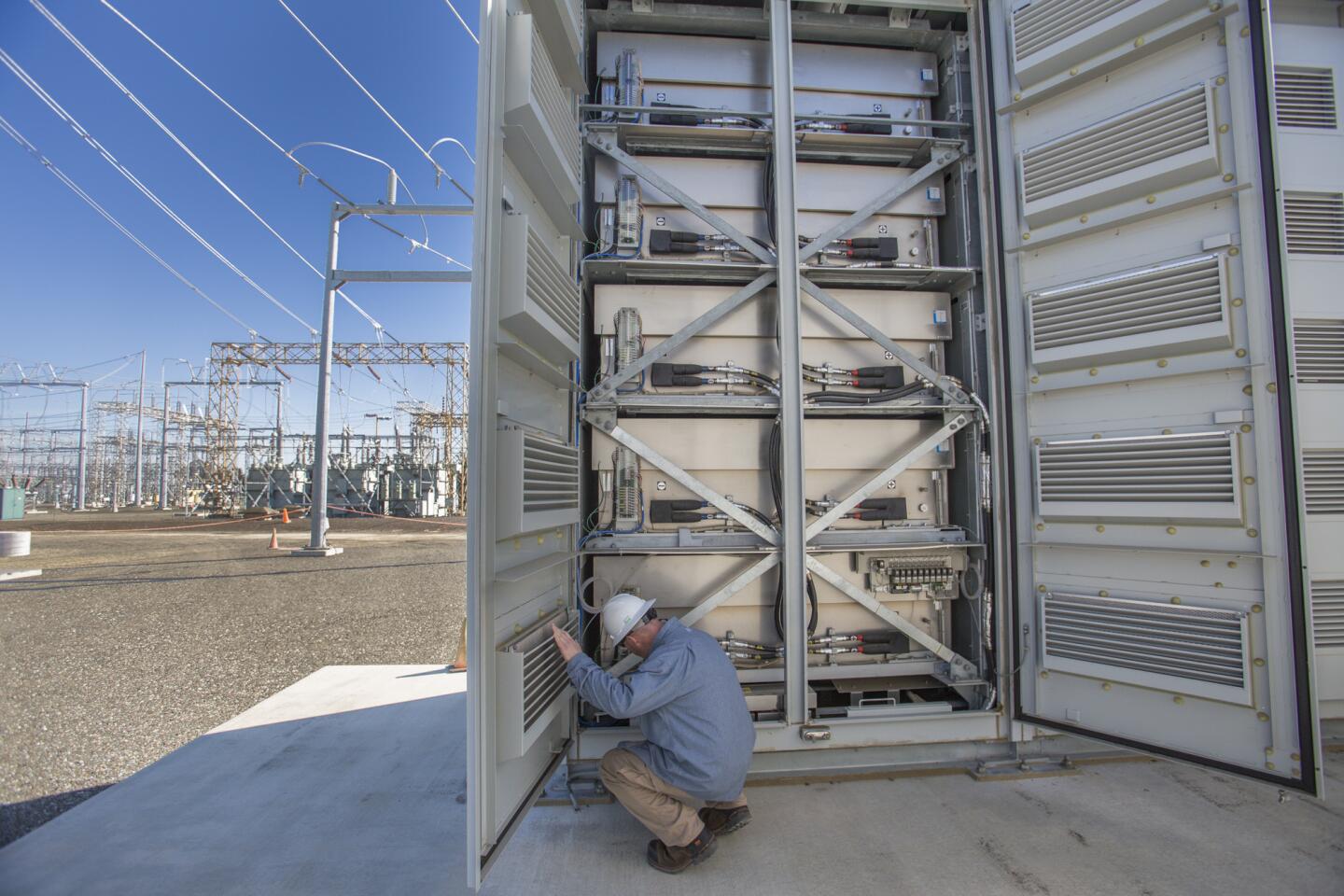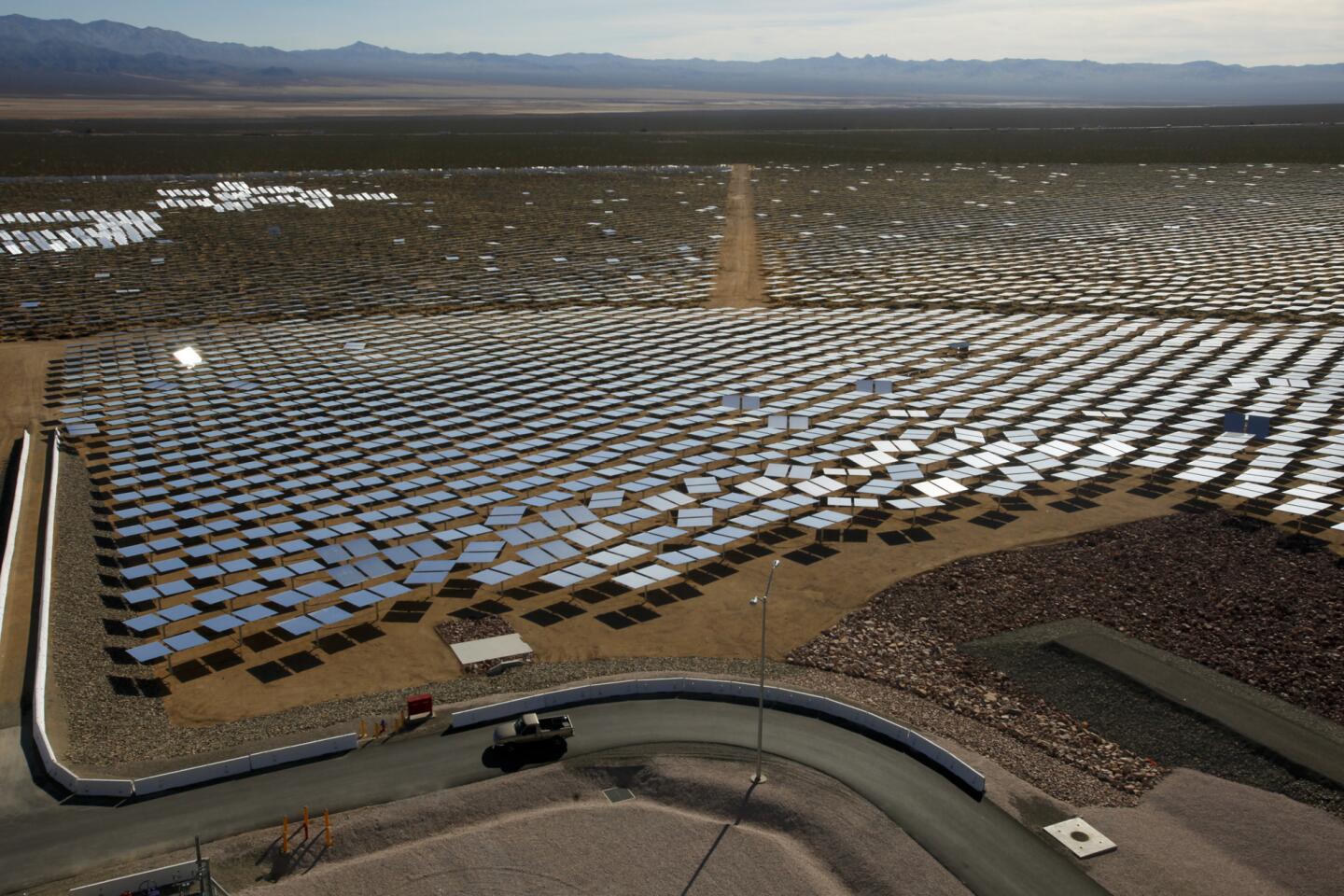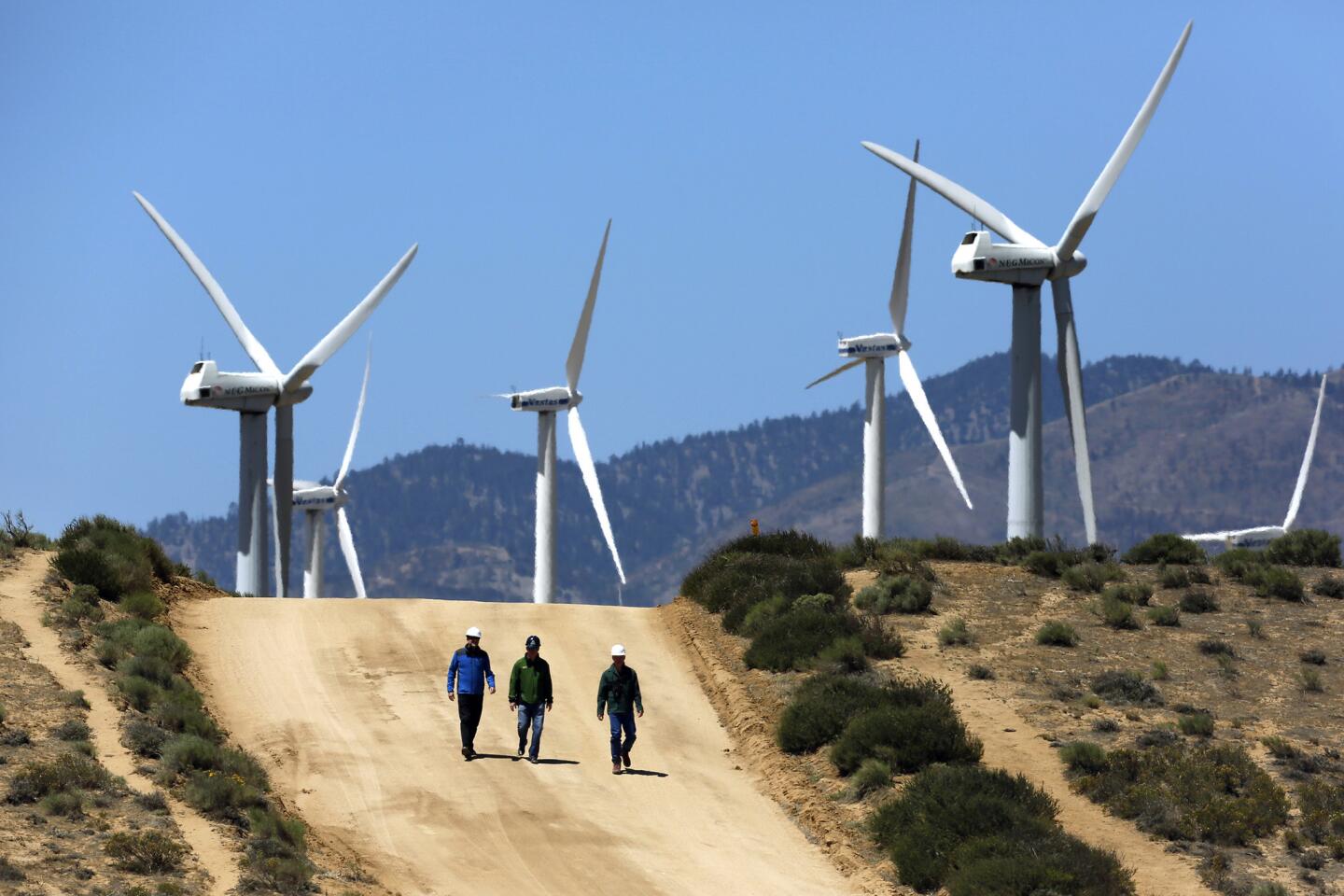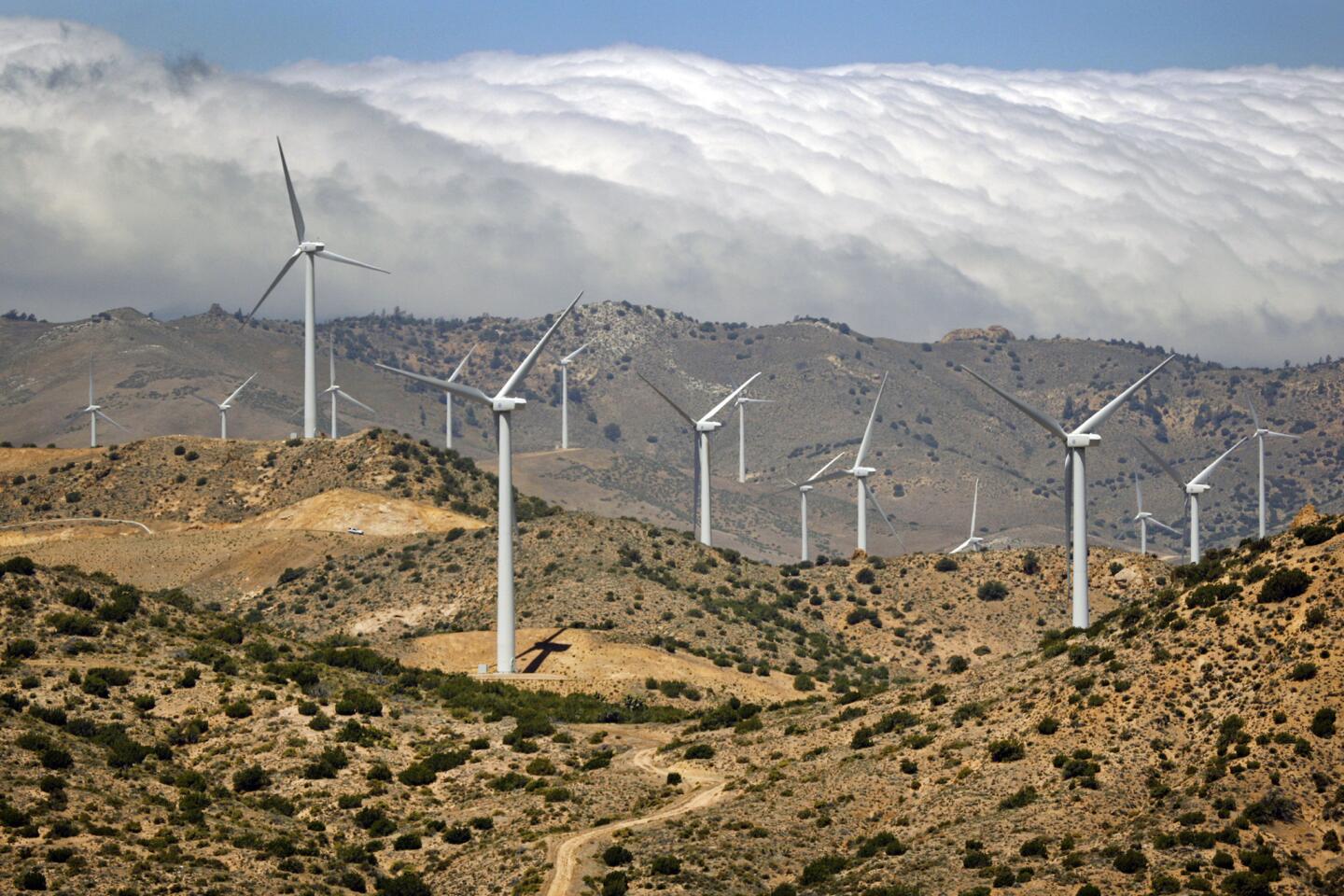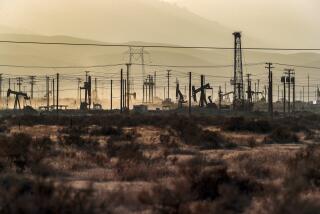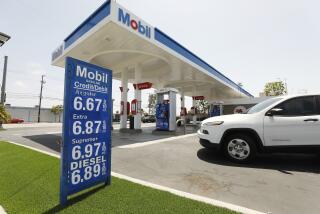California’s push for clean energy has a problem: no place to store it
Reporting from FOLSOM, Calif. — On a quiet Sunday morning last April, power plants were pumping far more energy into California’s electricity grid than residents needed for their refrigerators, microwaves and television sets.
So officials made an odd request in a state that prides itself on leadership in renewable energy: They asked wind and solar plants to cut back their output. For 90 minutes, clean energy production was slashed 1,142 megawatts, enough electricity for hundreds of thousands of homes, while dirtier power from less flexible sources stayed on to keep the system stable.
It was the largest curtailment of green energy last year, according to grid operators, and it highlights a hurdle for Gov. Jerry Brown’s plan to increase the state’s reliance on renewable energy. Peak demand for electricity rarely coincides with the brightest sunshine or the strongest winds, so finding a way to store clean power and deliver it when needed will be critical as California relies more on renewable energy.
There’s going to be a lot of “green power that needs a home,” said Keith Casey, a vice president at the California Independent System Operator, which manages most of the state’s electrical grid.
The state requires three of California’s largest utilities to invest in hundreds of megawatts of storage over the next several years. But grid operators say that won’t be enough if the Legislature approves Brown’s proposal that half of the state’s power come from renewable sources by 2030, up from the current target of one-third in 2020.
The governor has acknowledged the problem, saying in a recent Sacramento speech that “you get a lot of energy in certain parts of the day, and you have so much electricity you can’t use it. So you have to do something with it. You need storage.”
Companies are experimenting with supersized batteries and tanks of compressed air in the hunt for the best way to hold an electrical charge and respond quickly to shifts in power supply and demand. Brown suggested that even cars could be used to capture clean power — if more Californians drove electric vehicles and charged them when supply is high and demand is low, for example.
Such ideas represent a major shift in the energy industry, said Tom Starrs, vice president of market strategy and policy at SunPower, a San Jose solar company.
“Historically, we manipulated the supply of energy,” he said. “Now we’re talking about shifting the demand to accommodate the available supply.”
There’s more than one way to deal with an excess. For example, officials are working to boost cooperation among grid operators throughout the West so electricity can be sold where and when it’s needed, reducing the need to burn dirtier fuels around the region.
“There could be opportunities for exporting [extra] power to neighboring states,” said V. John White, executive director of the Center for Energy Efficiency and Renewable Technologies in Sacramento.
But White and others view storage as a key to ensuring that California is making the most of its solar and wind energy.
One experiment is taking place at a Pacific Gas and Electric facility in Vacaville, about 30 miles southwest of Sacramento.
A century-old building on the site was once used to relay power to the Bay Area, and the state-of-the-art equipment inside was such an object of curiosity that observation windows were installed for gawkers. Now the hot new technology is outside in the yard behind the building, in two gray metal boxes standing two stories tall.
Each holds stacks of battery cells, and combined, they can store 2 megawatts of electricity, enough to power 1,400 homes for a full day. Over the course of the day, energy flows into and out of the stacks.
Although it’s a tiny amount when compared with the tens of thousands of megawatts flowing through California’s electricity grid every day, PG&E is monitoring the operations through a partnership with the California Independent System Operator to see how the technology could be applied throughout the state.
“It’s a drop in the bucket. But it helps,” said Jon Eric Thalman, PG&E’s director of transmission asset management and regulatory strategy.
Batteries are an expensive proposition because the technology is still new and not widely available, and taxpayer money has been a key way to get such projects off the ground. PG&E received $3.3 million from the California Energy Commission for the Vacaville battery experiment and a separate, similar installation in the San Jose area, part of the $13.8 million in grants the agency has distributed since 2007.
Under the rule set by the Public Utilities Commission, three of California’s largest utilities will need to install 1,300 megawatts of storage capacity by 2024. The first contracts are scheduled to be submitted for approval later this year.
“If you don’t have a way to store [clean energy], you’ll end up wasting renewables,” said Commissioner Carla Peterman.
State officials hope the mandate shows companies that it’s worth investing in storage technologies that can make renewable energy more practical.
LightSail Energy, a Berkeley company, is developing equipment that could use green energy to pump compressed air into storage tanks. The air would be released through a motor, generating electricity.
“You can think of it as any other battery,” said Travis O’Guin, LightSail’s business development manager.
The company is funded by private investors, attracting financial backing from Bill Gates and Peter Thiel, among others.
EnerVault, a Sunnyvale firm, has built its own battery prototype outside of Turlock. Nearly half of the project’s $10-million cost came from the U.S. Department of Energy, and the California Energy Commission chipped in $470,000.
The equipment uses a solar plant next door to charge its battery, which stores electricity in liquid, a method that EnerVault hopes provides better endurance than lithium ion or sodium sulfur batteries.
Last week, solar giant SunEdison announced it was buying a start-up, Solar Grid Storage, which installs batteries that can store power from nearby solar arrays. The batteries could absorb energy when it’s sunny and there isn’t much demand for power — then help provide power to the electricity grid when clouds block the sun.
Tim Derrick, general manager of a SunEdison division that’s working on battery projects, said storage systems could one day be expanded to hold hundreds of megawatts of clean electricity until needed.
“That is the holy grail of storage,” he said. “We’re moving rapidly toward that.”
Twitter: @chrismegerian
More to Read
Sign up for Essential California
The most important California stories and recommendations in your inbox every morning.
You may occasionally receive promotional content from the Los Angeles Times.
